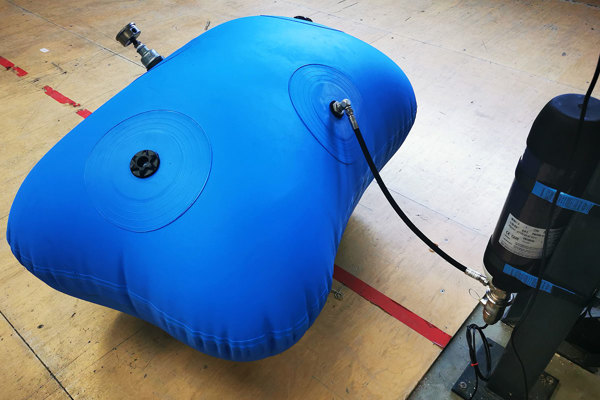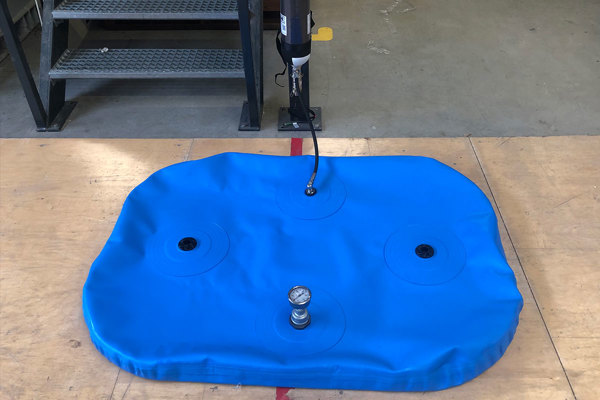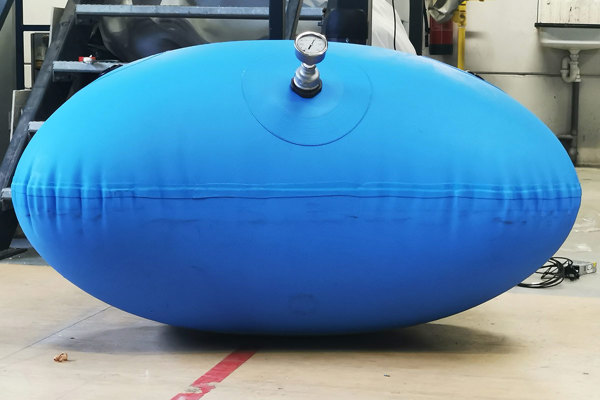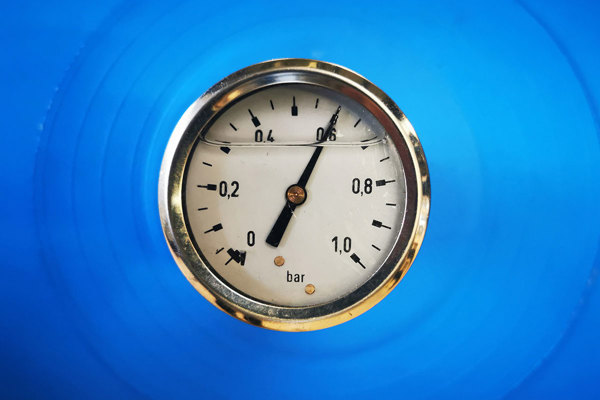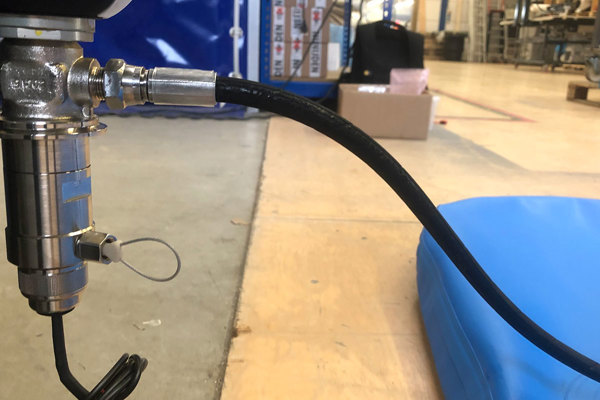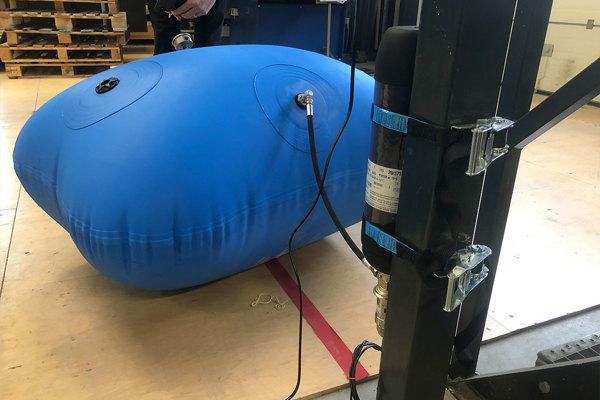- Architecture
- Industry
- Leisure
- uk >
- Technology Center >
- Research and testing >
- Self-inflating lifting system
Self-inflating lifting system
Buitink Technology develops and produces inflatable systems that are “self-filling”. That is to say that we make one or more inflatables that are connected to a self-regulating inflator system. This system then usually consists of a (lightweight) gas cylinder filled with nitrogen and CO2, a manifold, and an activation mechanism.
An activation mechanism can, for example, be electric (a button), mechanical (a pull-cord), or an ignition that is activated on contact with water.
Applications of a self-inflating lifting system
Examples of its use can take the form of lifebuoys, inflatable emergency floats, and other (inflatable) systems which have to inflate quickly and automatically.
Development of self-inflating flotation or lifting cushions
We frequently develop self-inflating flotation of lifting cushions for specific situations that are subject to an NDA on the instructions of our clients. In such cases, we cannot usually say much about the precise application. Examples might include inflatable lifebuoys for a seagoing passenger transport, an inflatable fuel discharge system, and so on.
When developing something like that, we carefully match the content of the cylinder (proportion of N2 and CO2, for example) to the content of the object to be inflated. The volumes of the cylinder and the objects are also calibrated to each other so that the inflatables are brought to the correct pressure within the specified time. Furthermore, over-capacity is usually provided for in the air supply, and we provide overpressure safeties with an adequate flow rate to avoid excess pressure in the object. In addition, the possibilities for in-built redundancy are examined.
Testing self-inflating flotation and lifting cushions
The photos and video on this page show a test involving the automatic inflation of an inflatable flotation device which is connected to an air/gas cylinder. In this case, the inflation can be activated with a button (electric) or a pull-cord (mechanical). It is also possible to equip this system with an ignition system which activates when it comes into contact with water (so if the object drops into the sea, for example).
In this way, after the engineering and development, one tests whether the system works as designed: Is the specified pressure (in this case 550 mbar) attained? Is the fill rate high enough (in this case 3-4 seconds)? Are the overpressure safeties functioning? And does the system stay up to pressure for long enough after inflation (in this case 24 hours)?
Questions?
Do you have questions or want more information? Please feel free to contact us. Call us at +31 (0)316-250830. But even easier: fill out the contact form below directly. We will contact you as soon as possible!











 Contact form
Contact form +31 (0)316-250830
+31 (0)316-250830